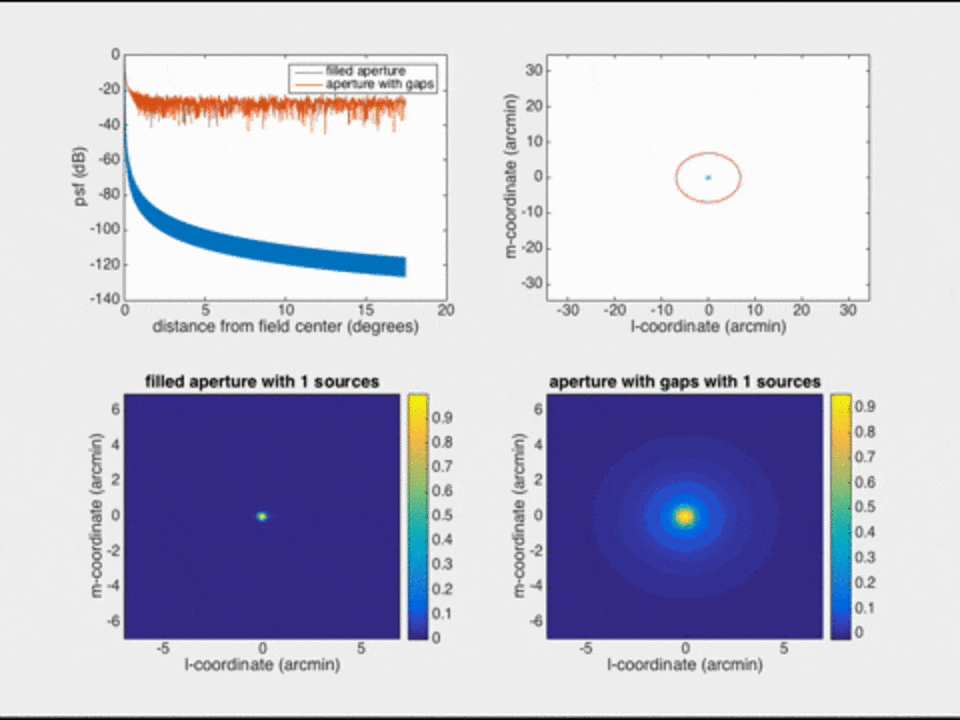Daily Image
18-05-2015Calibratability Fundamentals (3): the PSF sidelobe troubles of radio astronomy
| Submitter: | Stefan Wijnholds |
| Description: | In the previous images of this series on calibratability, we discussed the statistics of astronomical sources and their apparent fluxes. We showed that SKA-low will have to deal with ~100 million faint sources in a single deep observation, which collectively can cause serious problems. In today's image, we show the importance of low PSF sidelobes in a simple simulation. We compare a dirty image convolved with the PSF of a completely filled aperture, like in optical astronomy (blue curve in top left panel), with an image convolved with the PSF of an incompletely sampled (u, v)-plane. The latter is a typical situation in radio astronomy (red curve in top left panel). In our simulation, we put a 1 Jy source in the center of the image and then randomly generate another 2^16 (~65000) sources with a flux of 1 Jy. This resembles the mass of faint sources with very similar flux that will appear in deep SKA-low observations after the bright sources have been subtracted. The locations of these sources are shown in the top right panel, which shows only a fraction of the image. The two bottom panels show the sub-image in the red circle in the top right panel after putting more and more (1, 2, 4, ..., 2^16) sources in the sky model. The bottom left panel shows the dirty image convolved with the PSF of the filled aperture. In this image, the sources are clearly visible, so it is obvious that deconvolution, if needed, is not a problem. This situation is very familiar to optical astronomers. In radio astronomy, we typically work with an incompletely sampled aperture, which causes higher PSF sidelobes. The combined effect of the sidelobes of the many faint sources now causes a big mess, as demonstrated in the bottom right panel. Deconvolution is clearly needed. However, as becomes clear in the last frame of the movie, the fainter sources will, at some point, drown in the PSF Sidelobe Noise (PSN) of the many other sources. This may make deconvolution hard, if not impossible. For SKA-low, this immediately begs the question: How low should our PSF sidelobes be to deal with ~100 million sources in a single observation, and how can we achieve that? These questions will be addressed in an upcoming dailyimage, so stay tuned for the continuation of this series. |
| Copyright: | ASTRON |
| Tweet |  |
